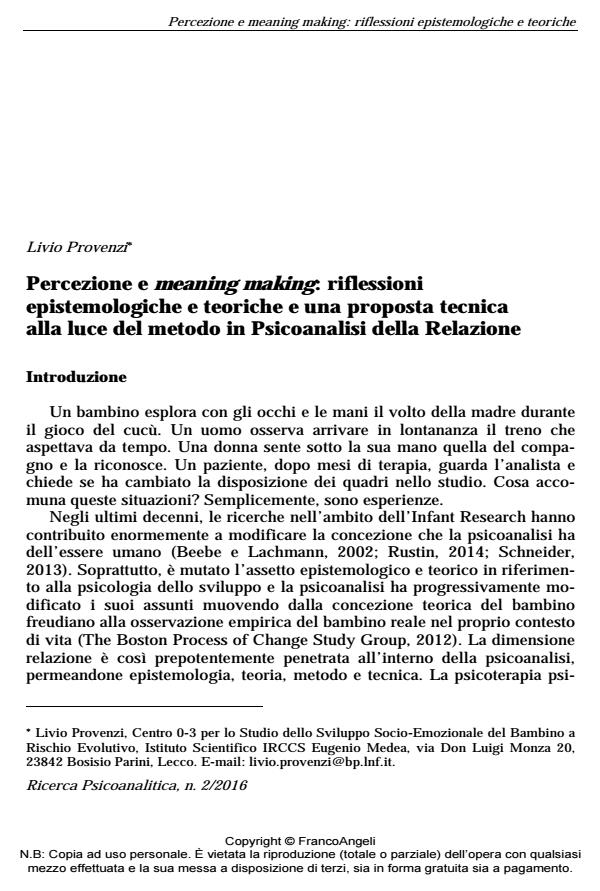Perception and meaning making: epistemological and theoretical reflections and a technical proposal in the light of method in relational psychoanalysis
Journal title RICERCA PSICOANALITICA
Author/s Livio Provenzi
Publishing Year 2016 Issue 2016/2
Language Italian Pages 18 P. 75-92 File size 105 KB
DOI 10.3280/RPR2016-002006
DOI is like a bar code for intellectual property: to have more infomation
click here
Below, you can see the article first page
If you want to buy this article in PDF format, you can do it, following the instructions to buy download credits

FrancoAngeli is member of Publishers International Linking Association, Inc (PILA), a not-for-profit association which run the CrossRef service enabling links to and from online scholarly content.
Work in the field of infant research touched on questions of great relevance for psychoanalysis and stimulated theoretical, methodological and technical progress in psychoanalytically oriented relational psychotherapy. In particular, infant research collected plentiful evidence of the idea that the infant is active from the very beginning of life in the process of meaning making through perceptive modes acted in interaction with the infant’s physical and social world. But the role of perception as basic process of meaning making has not been studied in the psychoanalysis of the background relation. The aim of this article is to highlight at epistemological level the central role of perception for the emerging meaning making processes in infants and adults. The A. presents a theoretical methodological reflection on the relation between perception intention and interaction. To close the A. presents a technical suggestion for the use of perception inside the clinical situation of psychoanalysis of couple relations.
Keywords: Cooperative assessment, interaction, meaning making, perception, Rorschach
Livio Provenzi, Percezione e meaning making: riflessioni epistemologiche e teoriche e una proposta tecnica alla luce del metodo in Psicoanalisi della Relazione in "RICERCA PSICOANALITICA" 2/2016, pp 75-92, DOI: 10.3280/RPR2016-002006